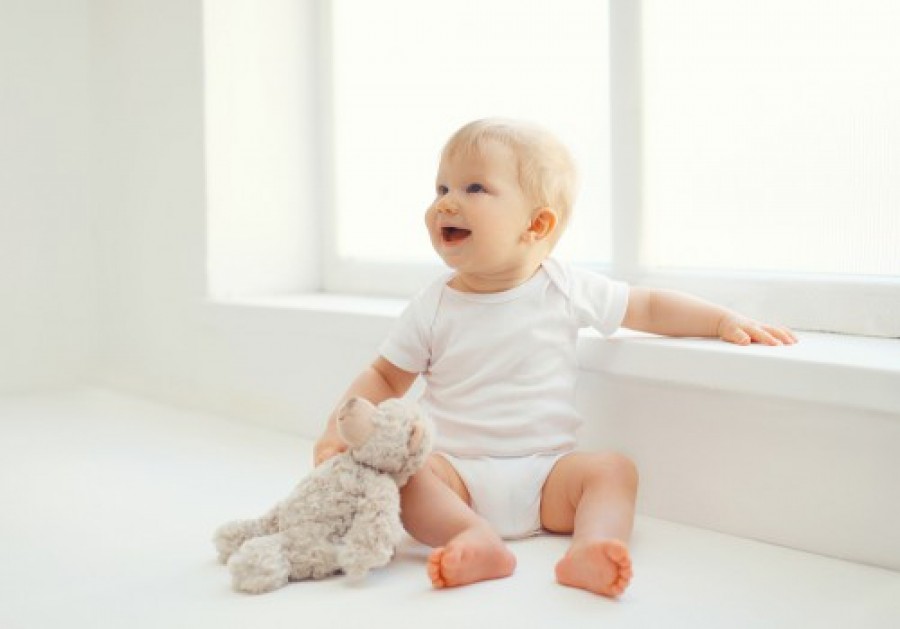Learning to Walk
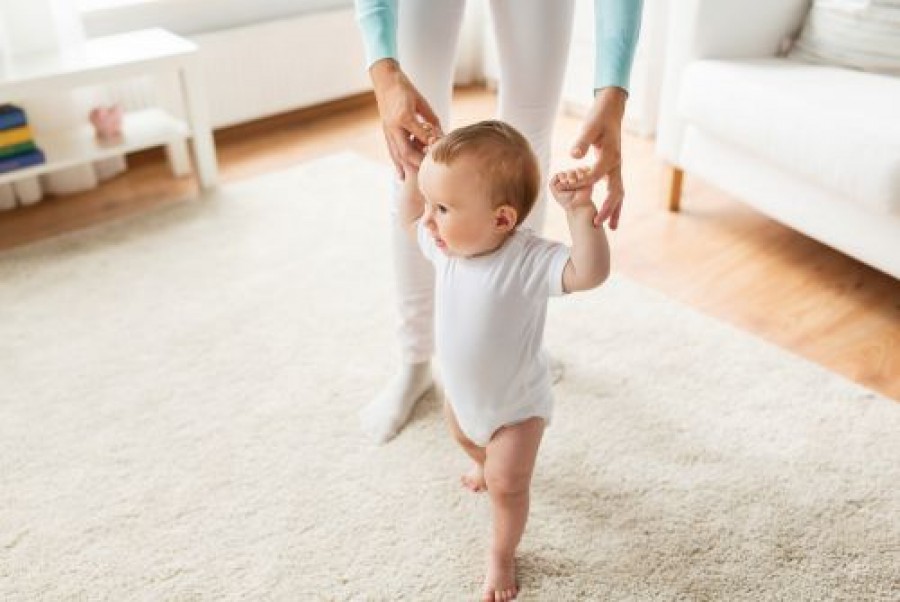
When your baby learns to walk, it’s a big milestone in their development and an exciting one too!
Learning to stand and walk on their own two feet can be a wobbly process for many babies, but once they get it right, there’s no turning back!
It’s important to know what to look out for during this stage of their development, how to support them and also how to keep them safe as they move into this new phase of development and become a toddler.
When will my baby learn to walk?
From around 8 months old you may notice your baby start to pull themselves upright to standing position using furniture around them.
After they have learnt to sit up and crawl, they will have developed enough strength and torso muscle to hold them upright in this position and you will probably notice they enjoy this and will stand in one spot holding themselves upright for prolonged periods of time.
By doing this they will build their confidence, balance and stamina and somewhere between 9 and 12 months old you will notice your baby attempting to take their first steps from this position.
This can be a little bit of a longer process compared to sitting up, rolling and crawling, but most babies are taking their first steps and walking short distances on their own by the time they are 14 or 15 months old.
All babies are different and it can take some babies a bit longer to get the hang of walking, some babies might not take their first steps until they are 16 or 17 months old.
This is completely normal and is not usually an indication of any developmental problems.
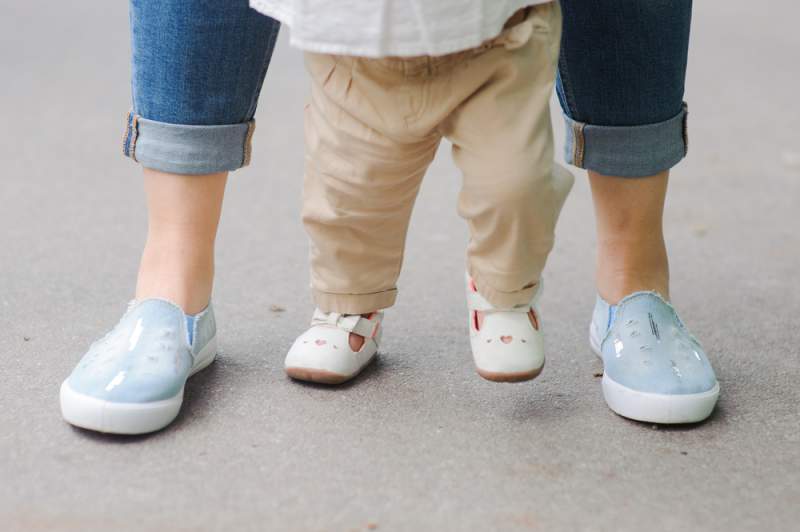
What are the stages of learning to walk?
From taking their first steps, to walking, to running and jumping, this process of movement can be a slightly longer process than other development stages, but it’s a great and fun one to watch develop!
Below are some of the stages that your baby might go through as they learn to walk:
9 -10 Months
At this stage your baby will be able to stand upright using furniture and stand for prolonged periods of time while checking out their surroundings.
They will also work out how to bend their knees while standing up and how to sit back down from a standing up position.
11 months
By now your baby may have learnt how to stand upright on their own without holding onto furniture, how to squat down on their knees and be able to stand up from a sitting position on their own.
They might be able to take a few steps forward while holding your hands, but will likely be very wobbly and it’s unlikely they will take their own first steps unsupported just yet.
You will probably notice that your baby spends a lot of their time on tip toes as you hold their hands and they take a few steps forward.
12-13 months
Most babies will be able to take their first few steps on their own unsupported by this age – although they may still be quite wobbly and unsteady as they do! It can be difficult to resist intervening and supporting your baby when you see them wobbling but try to let them build their balance and confidence on their own.
If your baby hasn’t managed these steps by this age – don’t panic! It can take some babies a little longer to get there.
14-15 months
Most babies will be comfortable taking steps on their own, and comfortably manoeuvring from sitting to squatting to standing and back down again on their own.
You will probably notice your baby become more active as their confidence grows in their ability to move around and they will start pulling and pushing toys around with them.
16 -18 months
By 18 months most babies are confident, proficient walkers – including mastering walking up the stairs with a little bit of support!
This is a fun stage to see your baby move into as their confidence grows and you will notice they start to enjoy other ways of moving including skipping, jumping, spinning in circles and dancing!
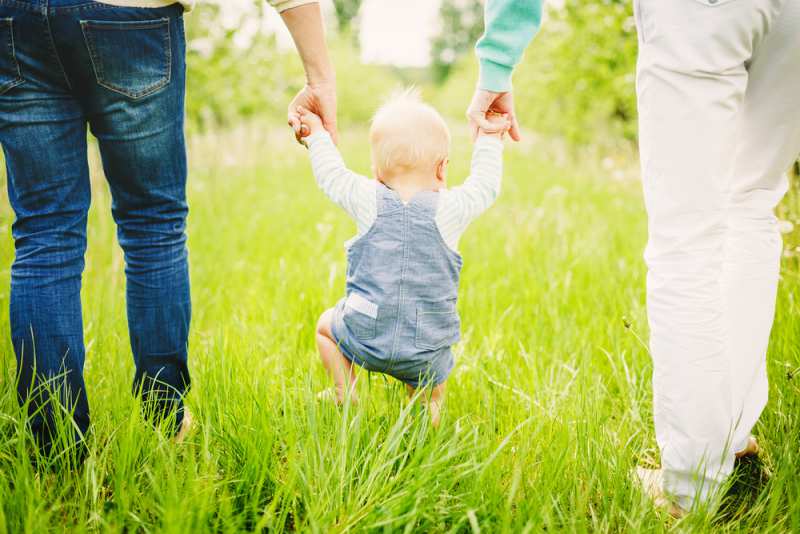
How can I help my baby learn to walk?
During this unsteady stage of development it can be difficult to resist jumping in and helping your baby, especially when they cry out for you to help them, but it’s important to give them time to learn the skills on their own and develop naturally.
There are still some great ways to support them so they feel encouraged to keep learning and practising:
1. Show them how it’s done
Instead of picking your baby up or sitting them back down when they get stuck, try showing them how to do it.
Demonstrate how to bend their knees, show your baby and try and get them to copy you so they can learn on their own.
2. Get them to walk to you
Sit a little way away from your baby and hold out your hands to encourage them to walk towards you.
Place cushions around so if they wobble over they have a safe landing place.
3. Hold their hands
During the early stages of learning to walk you can help support your baby by holding their hands as they practice and build confidence in moving their feet forward – you will notice they spend a lot of this practice time of their tip toes so it’s important to make sure they get some time doing this on their own too and not just by holding your hands.
4. Toddler Toys
Avoid using walkers with your baby. Many experts discourage them as being too easy for your baby to use to get around with and they don’t support their upper leg muscle development.
Try toys that are little lower, stable and with a wide base for support – toddler trucks and similar are good as they encourage full leg muscle development.
5. Avoid shoes
Until your baby is walking properly on their own outside, try to avoid having them wear shoes, especially as they are learning to walk. Being barefoot allows your baby to feel more with their feet and respond to where they are walking – building their confidence and balance too!
6. And most importantly – Encourage them
By smiling and cheering your baby on when they are trying to take small steps and learning as they go, you encourage them to keep trying.
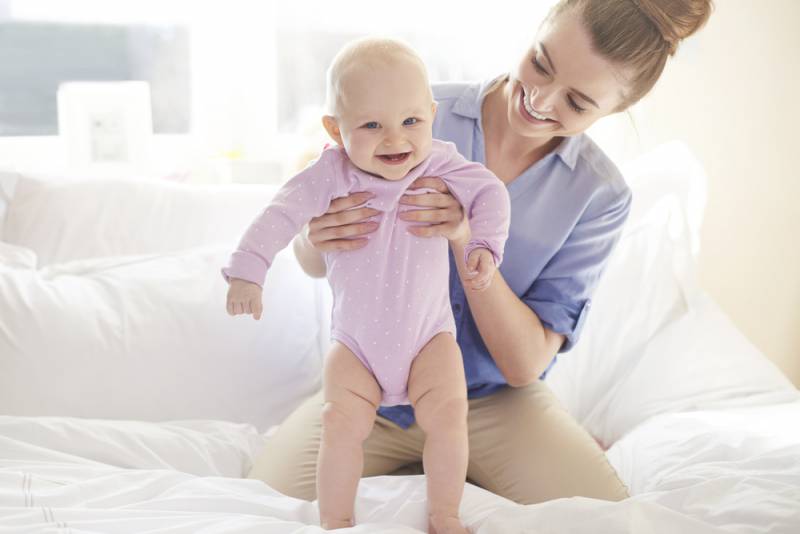
How can I keep my baby safe while they learn to walk?
While this is an exciting and fund development stage for both you and your baby, it’s also time to make sure that your home is safe as your baby starts moving around and exploring more!
There are a few ways to make sure your baby is safe while they are learning to walk, and once they’re up and moving around:
– While they learn to walk
Make sure your baby has a safe space with cushions and blankets around them to prevent bumps and bruises if they do fall over when taking those first steps.
Keep floors and child areas clean and obstacle free so they have a safe space to learn in and never leave your baby unattended.
– Once they have started to walk
Trips, falls and tumbles are common for babies and toddlers, especially while they’re learning to walk. Keep these to a minimum and keep your baby safe with a few simple guidelines:
- Safety Gates – keep safety gates on rooms such as your kitchen or bathroom to prevent your baby from wandering in and keep stair gates at the top and bottom of your staircases.
- Slip-Matts – use slip proof pads and matts under rugs and loose carpets to help minimise the risk of slips and trips
- Cover corners – use padded corner protectors on things like coffee tables, desks and cabinets that your baby could knock themselves on if they do fall – at least this way you remove the risk of a more severe injury!
- Keep furniture safe – as your baby moves around more, they will climb on more furniture. Keep furniture and other items your baby may climb up on away from windows that your baby could climb up to.
- Be aware – keep scissors and other dangerous objects locked away. Use door safety locks on cupboard doors and drawers to stop your baby getting their hands on anything they shouldn’t.
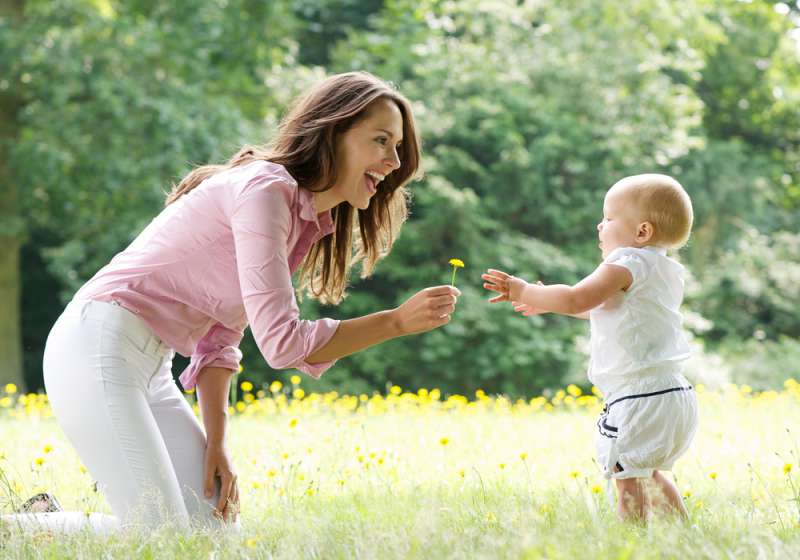
What should I do if my baby doesn’t start walking?
As mentioned earlier – all babies learn new skills differently and can develop at different speeds. Not all babies will progress through all the stages mentioned above – some might learn to walk earlier and some might learn later. This is all completely natural!
If by 16 months your baby has not made any attempts at taking their first steps, seems disengaged and unresponsive to your encouragement and uninterested in their environment, then you should speak with your doctor or midwife who can assess your baby and arrange for further tests if needed.
It’s also a good idea to speak to your doctor if you notice your baby is unable to put weight onto one of their legs, or they appear to dragging their feet, legs or other parts of their body when they are learning to move around and walk.
Again, don’t be too concerned if it takes your baby a little longer than the suggested stages above. Most babies will be taking their first steps by the time they are at least 18 months old.
What’s most important is that your baby is active, engaged and progressing in their development.
Baby Developmental Milestones
How your baby’s eyesight develops


